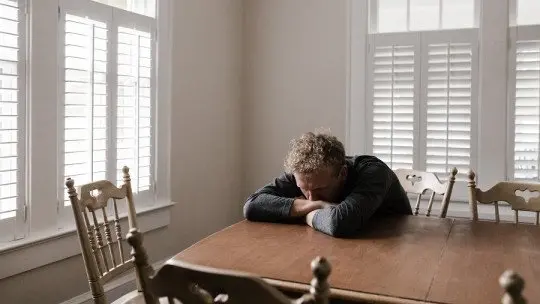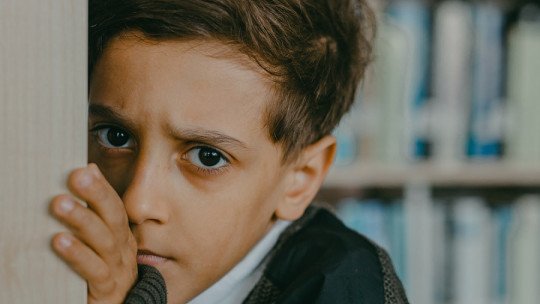Among all the reasons for consultation that psychologists receive daily in the field of psychology applied to children, childhood traumas are one of the most common and problematic, taking into account that during the first years of life we are very vulnerable.
Childhood is a crucial stage of development in which any experience can greatly influence our psychological development; In this sense, one of the problems that can most intensely affect the mental health of a boy or girl are traumas, disorders widely studied in the field of clinical psychology.
In today’s article we will briefly summarize what traumas are and talk about one of the most common forms of intervention for childhood trauma: cognitive-behavioral therapy.
What is a trauma?
Trauma is the psychological impact of events or experiences that emotionally destabilize the person who lives them, and that in the long run they can end up developing all kinds of psychological disorders, post-traumatic stress disorder being the most common.
Since people are different and not everyone experiences the same events in the same way, it is necessary to highlight that traumas do not appear in the same way in everyone, the only thing they have in common is that they are very stressful or emotionally stressful experiences. painful events that mark a person’s life forever.
As indicated, traumas especially affect children, since they are at a stage of personal, neurological and biological development in which experiences can affect them significantly. So, untreated childhood trauma is capable of remaining in a more or less latent state for decades harming the person even when reaching adulthood.
These psychological imbalances appear in significant situations in a person’s life and are linked to violence, loneliness or health problems, such as car accidents, natural disasters, cases of violence or abuse, experiencing a war. , being a victim of a crime or witnessing a murder.
Childhood trauma must be treated as soon as possible to prevent the child’s mental health from deteriorating further and the trauma from becoming chronic and potentially leading to more serious psychological disorders.
Below we present the most appropriate intervention modality that has proven to be most successful in treating cases of childhood trauma in the field of psychology.
Cognitive-behavioral therapy focused on childhood trauma
Cognitive-behavioral therapy is one of the most applied in the world and for several years, it has been considered by psychology professionals as the most effective for treating childhood trauma, due to its proven scientific and empirical evidence.
The main objective when applying cognitive-behavioral therapy (CBT) in cases of trauma is intervene both in the observable behavior patterns and in the thinking schemes and ways of interpreting the patient’s reality. That is to say, there is a double path of intervention: on actions based on interaction with the environment, and on internal psychological processes. Both reinforce each other to lead to change for the better.
Cognitive-behavioral therapy focused on childhood trauma is applied in a consultation or therapeutic environment to help the child overcome their trauma, through various psychological techniques such as cognitive restructuring, training in relaxation techniques or psychoeducation.
Main characteristics of Cognitive-behavioral Therapy focused on childhood trauma
These are the essential characteristics that Cognitive-Behavioral Therapy focused on childhood trauma must understand to fulfill its mission efficiently and help the boy or girl overcome their trauma.
1. Intervention adapted to the child
Cognitive-behavioral therapy focused on childhood trauma is a structured therapeutic modality of relatively short duration (can last from a few months to years).
This type of intervention is adapted from the first session to the child’s developmental level and needs, as well as their social and cultural environment, socioeconomic status and other particular characteristics that the client presents.
In addition to that, the intervention is carried out at all times in conversation with the parents of the boy or girl to guarantee their well-being and physical and psychological safety as much as possible.
2. Psychoeducation
The psychoeducation phase within Cognitive-behavioral Therapy focused on trauma consists of the therapist providing a series of important information to both the child and their parents about the psychological disorder they are going through; both about the reactions he can go through and the emotional implications that the trauma can cause him.
In the psychoeducation phase, The foundations are laid so that both the child and his family learn everything necessary about his problem to later also provide all kinds of knowledge, techniques and useful strategies that the child can apply in their daily life with the aim of overcoming their trauma and minimizing its negative psychological effects as much as possible.
3. Parent involvement
In Cognitive-behavioral Therapy focused on the trauma of younger patients, the active participation of non-offending parents is essential, since the child must feel supported and cared for by their parents as a therapeutic mechanism that helps to overcome the trauma more quickly. quickly, as numerous scientific studies have shown.
The great dependence that children have on their parents after experiencing serious trauma It makes it essential that parents participate in therapy, providing protection for the child, trust, security and also reframing the meaning of the trauma so that the child is able to overcome it.
4. Cognitive restructuring (adapted to the patient’s age)
Cognitive restructuring is a classic psychological technique belonging to Cognitive-behavioral Therapy that consists of modifying the child’s negative thoughts, conceptions and ideas with more positive and adaptive ones that allow them to overcome their trauma.
The psychologist’s work consists, in this section, of providing all types of knowledge and helping the child to train new ideas and thoughts to reconfigure or modify old cognitive and intellectual exercises that prevent the client from overcoming their trauma.
5. Training in relaxation techniques
Relaxation techniques are essential for the child to learn strategies with which to better handle and manage both stress and their emotional or physiological reactions and responses.
Psychological professionals who are experts in child therapy will provide both parents and their children with a wide variety of techniques that they can put into practice in their daily lives to overcome their traumas, among which Mindfulness stands out.
6. Systematic desensitization
Systematic Desensitization is another very effective psychological technique applied in the field of clinical psychology. to overcome both traumas and anxiety disorders of all kinds.
This technique is based on the behavioral principle of counterconditioning, based on helping the child overcome his specific fear of a certain situation or object through gradual and systematic exposure to the source of his fear.
7. Skills training
Finally, in cognitive-behavioral therapy focused on trauma, very useful skills are also trained to help the boy or girl overcome it.
These skills They can be both cognitive coping and modulation and affective expression.









